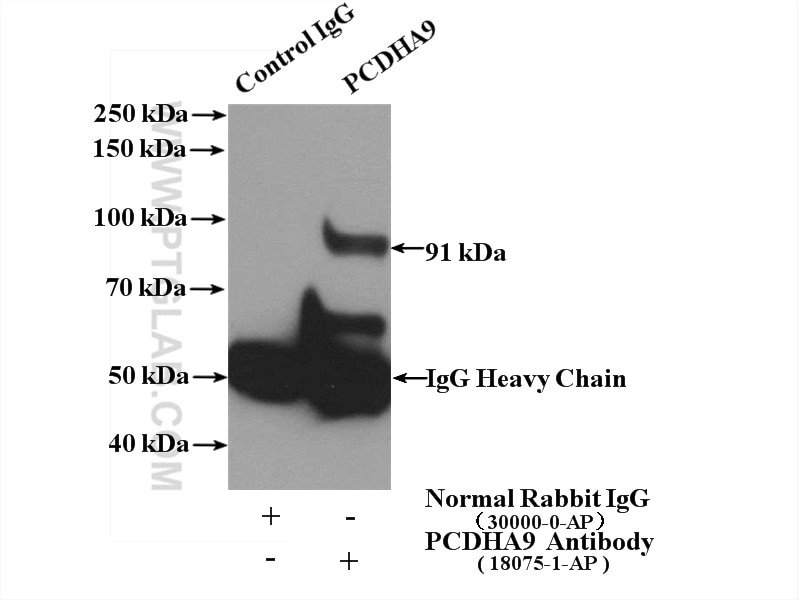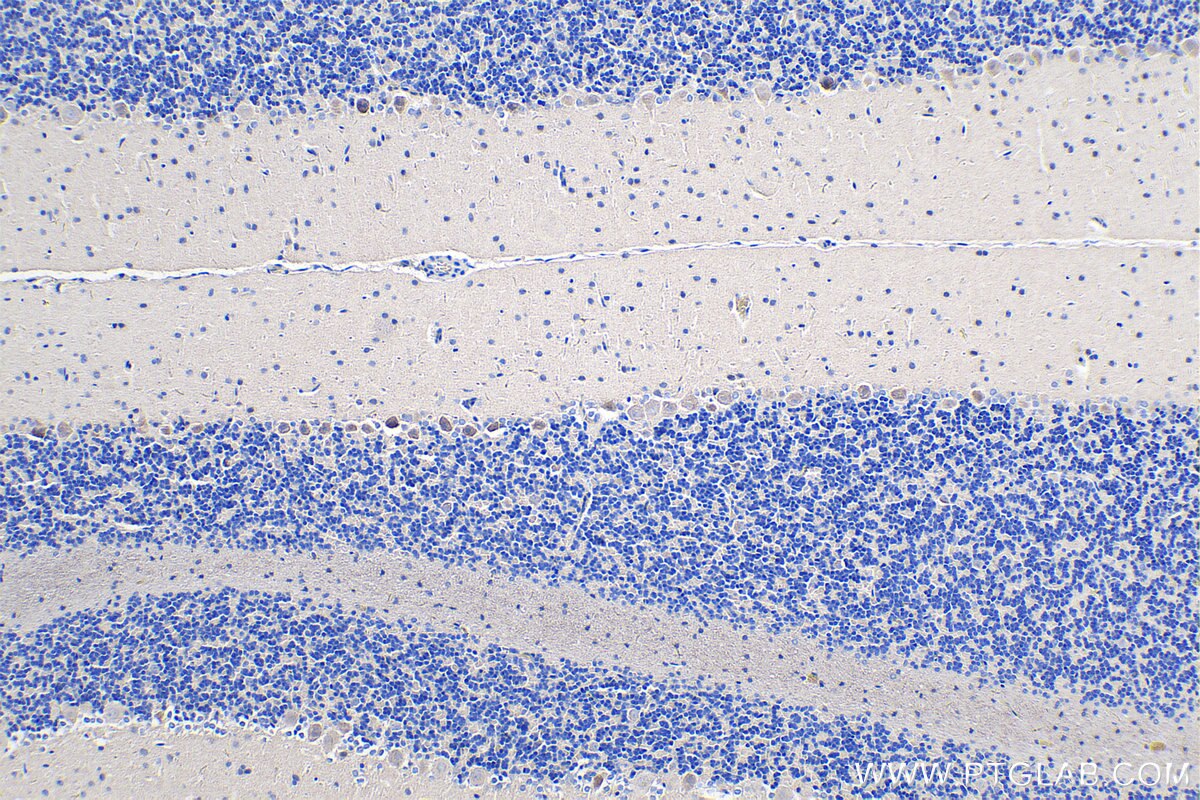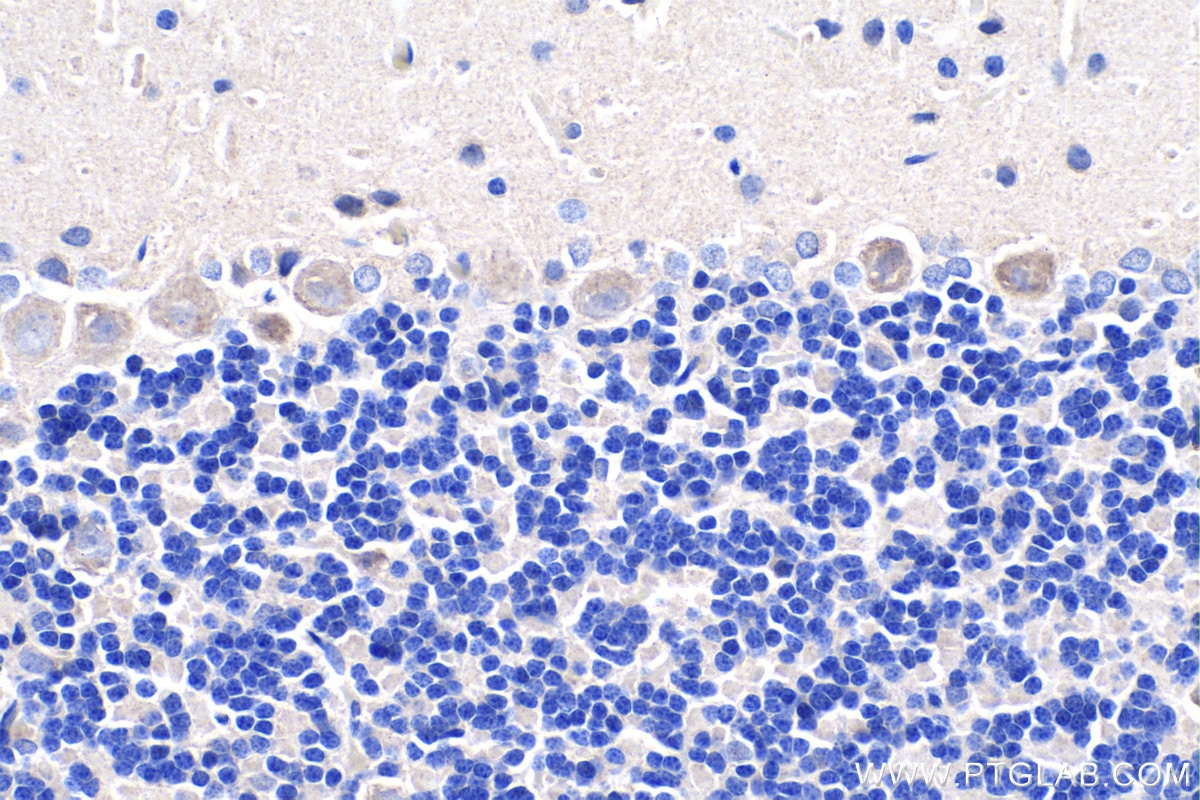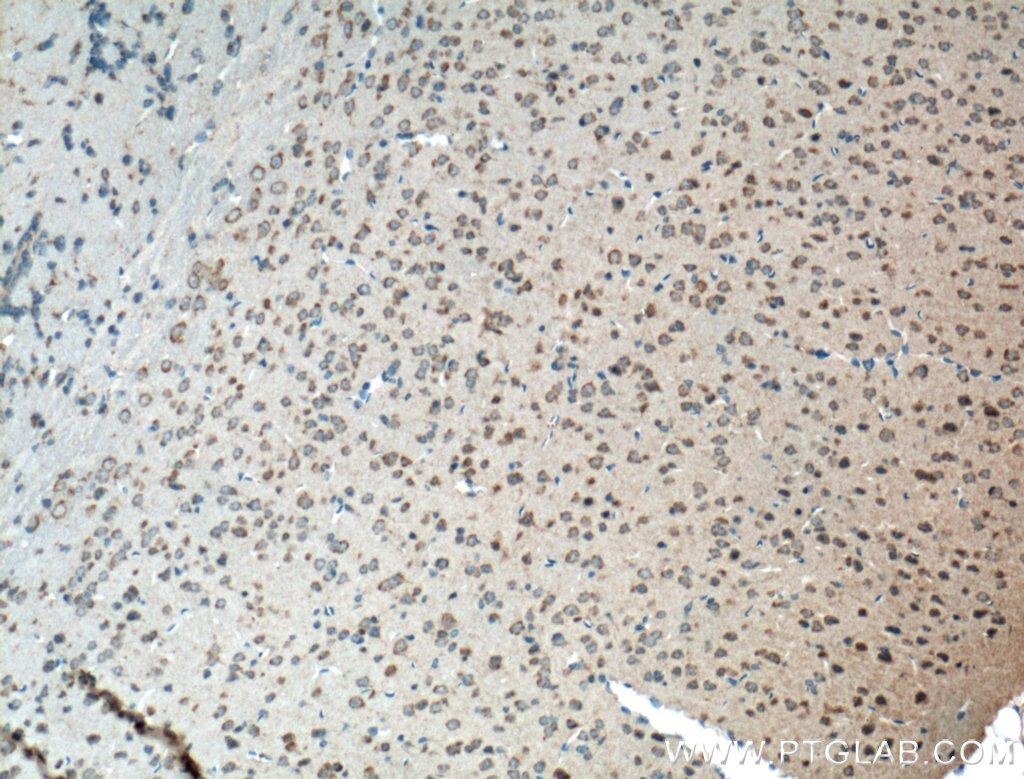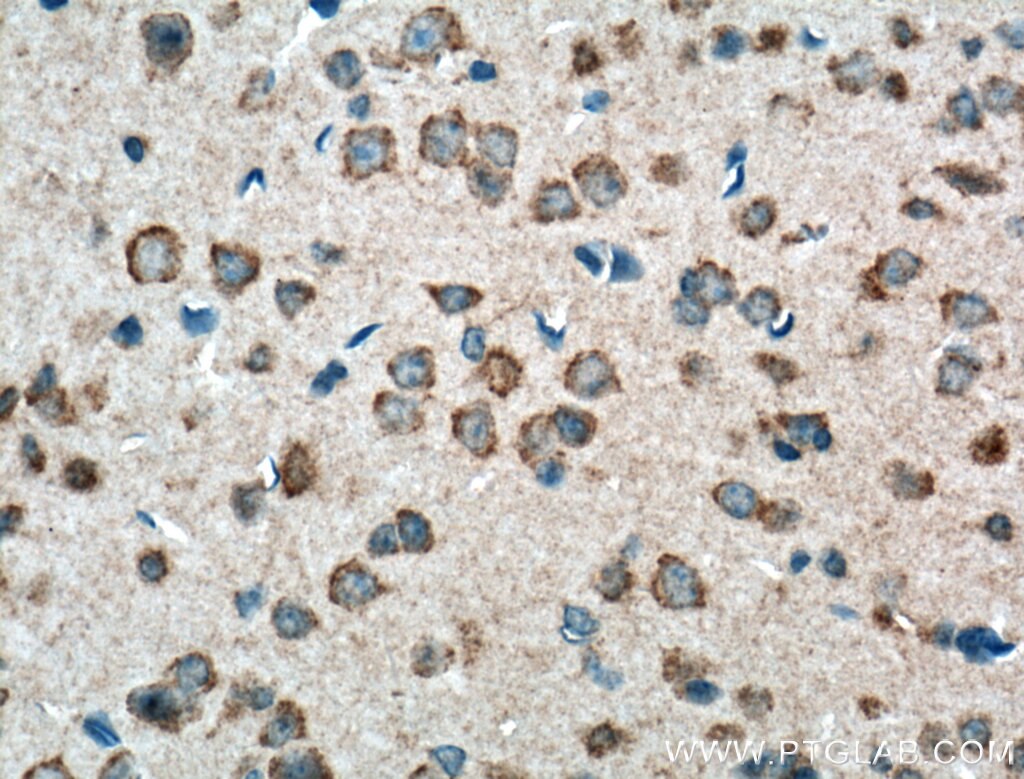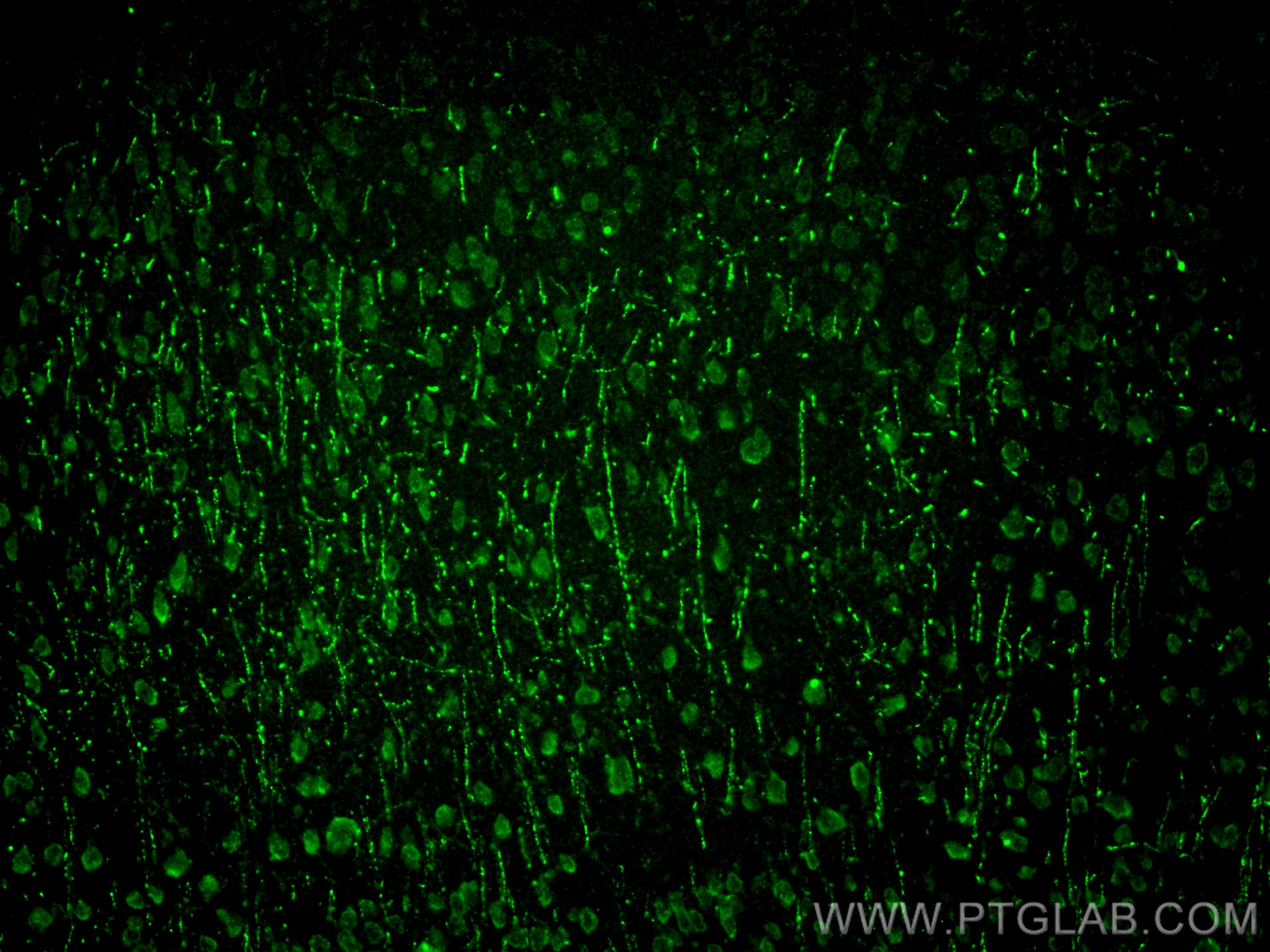Validation Data Gallery
Tested Applications
| Positive IP detected in | mouse brain tissue |
| Positive IHC detected in | mouse brain tissue, rat cerebellum tissue Note: suggested antigen retrieval with TE buffer pH 9.0; (*) Alternatively, antigen retrieval may be performed with citrate buffer pH 6.0 |
| Positive IF-P detected in | mouse brain tissue |
Recommended dilution
| Application | Dilution |
|---|---|
| Immunoprecipitation (IP) | IP : 0.5-4.0 ug for 1.0-3.0 mg of total protein lysate |
| Immunohistochemistry (IHC) | IHC : 1:50-1:500 |
| Immunofluorescence (IF)-P | IF-P : 1:50-1:500 |
| It is recommended that this reagent should be titrated in each testing system to obtain optimal results. | |
| Sample-dependent, Check data in validation data gallery. | |
Published Applications
| KD/KO | See 1 publications below |
| WB | See 2 publications below |
| IF | See 1 publications below |
Product Information
18075-1-AP targets PCDHA9 in WB, IHC, IF-P, IP, ELISA applications and shows reactivity with human, mouse, rat samples.
| Tested Reactivity | human, mouse, rat |
| Cited Reactivity | human, mouse |
| Host / Isotype | Rabbit / IgG |
| Class | Polyclonal |
| Type | Antibody |
| Immunogen | PCDHA9 fusion protein Ag12767 相同性解析による交差性が予測される生物種 |
| Full Name | protocadherin alpha 9 |
| Calculated molecular weight | 950 aa, 102 kDa |
| Observed molecular weight | 91 kDa |
| GenBank accession number | BC104802 |
| Gene Symbol | PCDHA9 |
| Gene ID (NCBI) | 9752 |
| RRID | AB_2878491 |
| Conjugate | Unconjugated |
| Form | Liquid |
| Purification Method | Antigen affinity purification |
| UNIPROT ID | Q9Y5H5 |
| Storage Buffer | PBS with 0.02% sodium azide and 50% glycerol , pH 7.3 |
| Storage Conditions | Store at -20°C. Stable for one year after shipment. Aliquoting is unnecessary for -20oC storage. |
Background Information
Protocadherins, which constitute the largest subgroup within the cadherin superfamily, are predominantly expressed in the nervous system and are probably involved in the regulation of neuronal recognition and connectivity (PMID: 17936607; 12231349; 17133224). The protocadherin subfamily can be further subdivided into three groups: the clustered protocadherins, comprising α-, β- and γ-protocadherins; δ-protocadherins; and others, many of which are solitary (PMID: 17133224). PCDHA9 belongs to the α-protocadherin (PCDHA) cluster. A homozygous variant in PCDHA9 has been found in three unrelated Chinese ALS patients, suggesting PCDHA9 as a candidate gene for amyotrophic lateral sclerosis(PMID: 38467605).
Protocols
| Product Specific Protocols | |
|---|---|
| IHC protocol for PCDHA9 antibody 18075-1-AP | Download protocol |
| IF protocol for PCDHA9 antibody 18075-1-AP | Download protocol |
| IP protocol for PCDHA9 antibody 18075-1-AP | Download protocol |
| Standard Protocols | |
|---|---|
| Click here to view our Standard Protocols |
Publications
| Species | Application | Title |
|---|---|---|
Gene Identification of two novel PCDHA9 mutations associated with Hirschsprung's disease.
| ||
